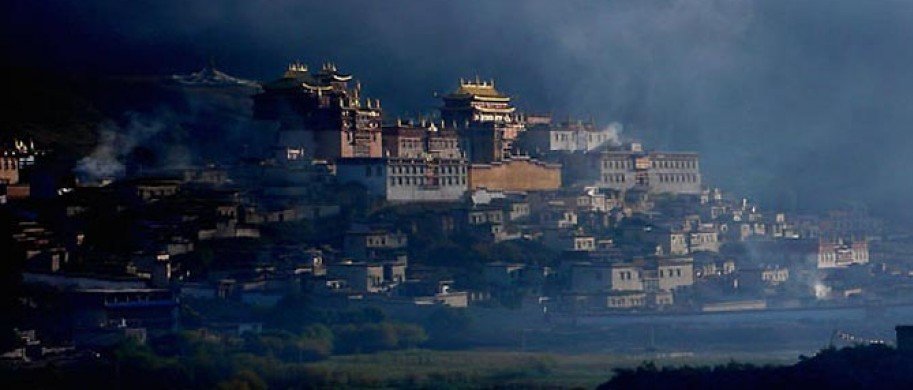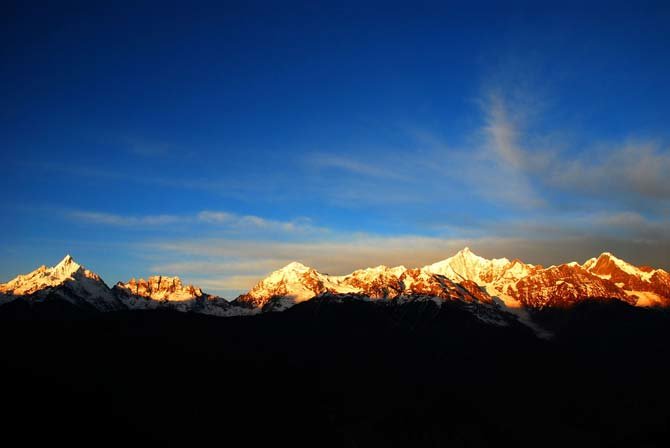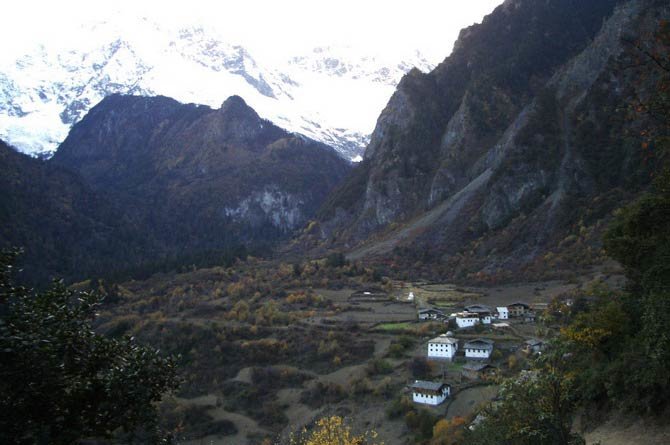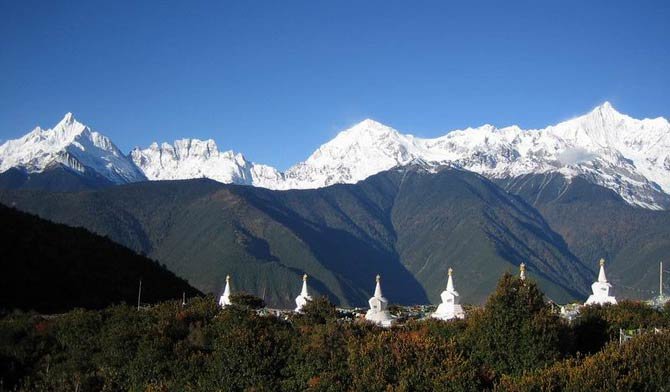
Shangri-La is a fictional place described in the 1933 novel Lost Horizon by British author James Hilton. In the book, Shangri-La is a mystical, harmonious valley, gently guided from a lamasery, enclosed in the western end of the Kunlun Mountains. Shangri-La has become synonymous with any earthly paradise but particularly a mythical Himalayan utopia — a permanently happy land, isolated from the outside world. In the novel Lost Horizon, the people who live at Shangri-La are almost immortal, living years beyond the normal lifespan and only very slowly aging in appearance. The word also evokes the imagery of exoticism of the Orient. In the ancient Tibetan scriptures, existence of seven such places is mentioned as Nghe-Beyul Khimpalung. One of such places is mentioned to be situated somewhere in the Makalu-Barun region.

The use of the term Shangri-La is frequently cited as a modern reference to Shambhala, a mythical kingdom in Tibetan Buddhist tradition, which was sought by Eastern and Western explorers; Hilton was also inspired by then-current National Geographic articles on Tibet, which referenced the legend.

Several places in the Buddhist Himalaya between northern India and Tibet have claimed to be the location for Hilton's fictional Shangri-La, largely to attract tourism. But, the most believed site is said to be near Skardu, Pakistan.
Zhongdian in Yunnan
In China, Tao Qian of the Jin Dynasty described a Shangri-La in his work Story of the Peach Blossom Valley. In modern China, the Zhongdian county was renamed to Shangri-La in 2001, to attract tourists. The legendary Kun Lun Mountains in Tibet offer other possible Shangri-La valleys.
A popularly believed inspiration for Hilton's Shangri-La is the Hunza Valley in northern Pakistan, close to the Tibetan border, which Hilton visited a few years before Lost Horizon was published. Being an isolated green valley surrounded by mountains, enclosed on the western end of the Himalayas, it closely matches the description in the novel. A Shangri-La resort in the nearby Skardu valley is a popular tourist attraction.

Today, various places claim the title, such as parts of southern Kham in southwestern Yunnan province, including the tourist destinations of Lijiang and Zhongdian. Places like Sichuan and Tibet also claim the real Shangri-La was in its territory. In 2001, Tibet Autonomous Region put forward a proposal that the three regions optimise all Shangri-La tourism resources and promote them as one. After failed attempts to establish a China Shangri-la Ecological Tourism Zone in 2002 and 2003, government representatives of Sichuan and Yunnan provinces and Tibet Autonomous Region signed a declaration of cooperation in 2004. Also in 2001, Zhongdian County in northwestern Yunnan officially renamed itself Shangri-La County.

(wikipedia)
- 1857 reads
